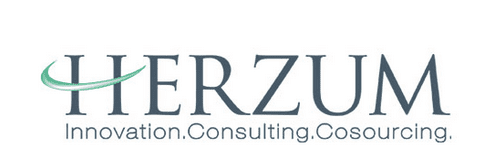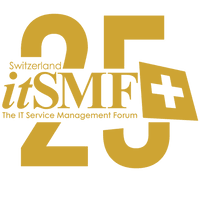Reading time: ~ 6 min.

Introduction
The concept of the value stream — the sequence of all activities, from initial customer request to delivery of value — is fundamental to modern business efficiency and lean thinking. It's the circulatory system of an organization, determining how quickly and effectively customer needs are met.
Yet, in countless organizations, particularly those with complex legacy systems or rapid growth, these critical flows remain undocumented, informally managed, or exist only in the institutional knowledge of a few long-term employees.
This absence of formalization, spanning both business value streams (the end-to-end steps to deliver customer value) and IT value streams (the development, deployment, and operation of the supporting technology), is a silent drain on productivity, agility, and employee morale.
This article explores the primary reasons why organizations neglect to document their value streams and provides actionable strategies to overcome these hurdles and establish a culture of flow formalization.
Why value streams remain undocumented (the obstacles)
The reasons for a lack of formal value stream documentation are rarely malicious; they are typically rooted in a combination of cultural inertia, strategic misfires, and resource contraints.
The myth of «tribal knowledge» and informality
- Reliance on key individuals: over time, processes become embedded in the minds of long-standing employees. Asking them to document it feels like a waste of time, as they can execute it faster than they can write it down.
- «We're too busy» syndrome: The immediate pressure of day-to-day work (firefighting, meeting deadlines) consistently overrides the non-urgent task of documentation. Formalization is often seen as a low-priority "nice-to-have" rather than a core strategic enabler.
Organizational silos and blame-centric culture
Value streams, by definition, cross organizational and departmental boundaries. The inherent structure of many companies actively works against documenting them.
- Siloed metrics and goals: when departments (e.g., Sales, Operations, IT Development, IT Operations) have conflicting or highly localized Key Performance Indicators (KPIs), they are incentivized to optimize their local step rather than the end-to-end flow. Documenting the full value stream exposes these handoffs and potential failure points, which can be perceived as threatening.
- Fear of exposure: formal documentation brings transparency. It highlights bottlenecks, unnecessary rework loops, and non-value-add steps (waste). In a blame-centric culture, documenting these issues can lead to fear of accountability, creating an incentive to keep processes vague.
Lack of strategic clarity and sponsorship
Value stream formalization is often treated as an optional IT or process improvement project, rather than a strategic business imperative.
- Missing Executive mandate: without clear, sustained sponsorship from executive leadership (e.g., the COO, CTO, or CEO), documentation efforts lack the necessary authority to demand time and resources from all required departments.
- Focus on local optimizations: companies often invest heavily in local process improvements (e.g., better testing tools, faster code deployments) without understanding their impact on the overall value stream. If the bottleneck is a legal review step before deployment, optimizing the deployment pipeline won't reduce end-to-end lead time.
Methodological and tooling overload and the ITSM integration gap
- The ITSM integration gap: frameworks like ITIL 4 provide excellent guidance on practices (e.g., Incident Management, Change Enablement, Deployment Management). However, the stated objective for each practice is often local (e.g., restoring normal service operation as quickly as possible) and does not explicitly articulate how or why that practice must integrate with a larger, cross-functional value stream to deliver a product or service. This means practitioners optimize the practice itself, rather than optimizing the flow that uses the practice as a step. As a result, the value stream remains undocumented because there is no widely adopted model for mapping these practices as connected steps in a single business flow.
- Complexity and scope creep: Value streams can be incredibly complex. Teams often attempt to document every minute detail, leading to massive, unreadable "shelfware" diagrams that are immediately outdated.
- Lack of a common language/Tool: Different departments use different tools (Visio, BPMN/VDML tools, simple whiteboards) and terminologies. A lack of a standardized, company-wide visualization and measurement language for value streams makes cross-functional documentation difficult to reconcile.
Strategies for formalizing and sustaining Value Stream documentation (the fix)
Moving from undocumented chaos to a formalized, continuously improving flow requires a multi-faceted approach that addresses culture, strategy, and execution.
Start with the "North Star" – The Customer
The most effective way to gain executive and organizational buy-in is to link documentation directly to customer value and business outcomes.
- Identify the core business Value Streams: focus on the 5-7 streams that generate the most revenue or are most critical to the customer experience (e.g., "Onboarding a New Customer," "Fulfilling an Order," "Resolving a Major Incident").
- Value Stream Mapping (VSM) workshops: conduct focused, time-boxed VSM workshops that bring together all key stakeholders, from the customer-facing teams to the final delivery/support teams. The focus should be on measuring the flow:
- Lead Time: The total time from start to finish.
- Process Time: The time actually spent working on the request.
- Percent Complete and Accurate (%C&A): The rate at which work is correctly passed from one step to the next.
- Wait Time (Waste): The time the request sits idle between steps.
Shift the culture from blame to flow
- Measure the work, not the people: Executive sponsors must clearly communicate that the goal is to find waste in the process, not fault in the people. The metrics (Lead Time, Wait Time) provide an objective basis for continuous improvement.
- Cross-functional ownership: Assign a Value Stream Owner (VSO) who has executive authority and is responsible for the performance of the end-to-end flow, not just one silo. This individual drives a holistic perspective.
Implement a light, incremental documentation approach
- Just-Enough Documentation: Use three levels of documentation:
- Level 1 (Strategic): A high-level, single-page "Big Picture" map showing the 5-7 major steps and their key metrics. This is for executives and cross-functional teams.
- Level 2 (Operational): The detailed VSM showing process, wait times, and rework loops. This is the primary artifact for improvement teams.
- Level 3 (Tactical): Detailed Standard Operating Procedures (SOPs) for individual, complex steps within a single department.
- Establish a Single Source of Truth: Use a dedicated value stream management tool or a central repository (e.g., a shared wiki, specialized software) to ensure everyone is viewing the same, current version of the value stream map.
Bridge the Business and IT Divide (DevOps and IT Formalization)
- Map the Product Development Flow: Apply Value Stream Mapping principles to the DevOps pipeline, measuring the time from "idea committed to version control" to "code running in production." This helps find waste in handoffs, slow testing cycles, and manual approval gates.
- Reframing ITSM Practices: Instead of viewing Change Enablement, Incident Management, or Service Desk as standalone goals, they must be documented as steps or controls within the end-to-end product value stream. For example, the Change Enablement process is a critical control gate in the "Deploy" step of the IT value stream, which ultimately impacts the "Deliver Product" step of the business value stream. Documenting the connection forces teams to measure the latency and efficiency of that control gate on the overall flow, not just its internal compliance rate.
- Integrate Tools for Flow Visibility: Use tools that can connect the dots between planning (Jira, Rally), code (GitHub, GitLab), and operations (monitoring tools). This provides automated, near-real-time metrics for the IT value stream, preventing the documentation from becoming stale.
Conclusion
Our sponsors
A special thanks to our Advanced Sponsors:





